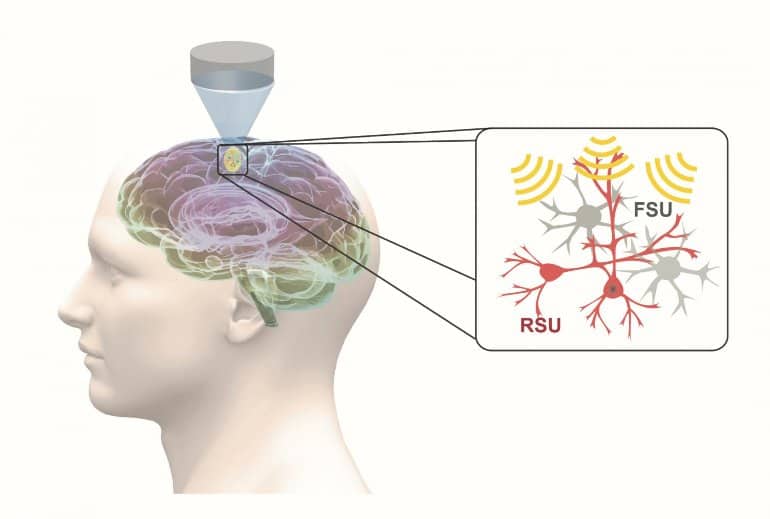Key Points
- Researchers sought to determine the mechanism behind low-intensity transcranial focused ultrasound (tFUS) neuromodulation.
- They used various tFUS parameters in a preclinical model to create distinct effects in specific subpopulations of functional neurons.
- Bin He’s team at Carnegie Mellon University led the collaborative research.
Intrinsic Functional Neuron-Type Selectivity of Transcranial Focused Ultrasound Neuromodulation
A team of researchers led by Bin He at Carnegie Mellon University sought to determine the mechanism behind low-intensity transcranial focused ultrasound (tFUS) neuromodulation. They wondered whether using various tFUS parameters in a preclinical animal model would create distinct effects in specific subpopulations of functional neurons—specifically, in regular-spiking (excitatory) and fast-spiking (inhibitory) units. Intracranial electrophysiological recordings taken from in vivo rodent brains during tFUS stimulation showed differential responses to the treatment – the excitatory neurons responded to increasing pulse repetition frequency with increasing spike rates, while the inhibitory neurons’ behavior showed no such dependence on ultrasound parameters. This cell-type specific response was verified in an optogenetic mouse model used to identify excitatory and inhibitory neurons. These results translated to chemically deafened rat and genetically deafened mouse models, eliminating confounding auditory inputs. The researchers hypothesized that these differential neuronal responses are due to variations in the density and distribution of mechano-sensitive ion channels and concluded that it is possible to noninvasively and preferentially target specific neuron types with tFUS.
See Nature Communications >
See Coverage from Carnegie Mellon University >
Image courtesy of CMU Engineering.
